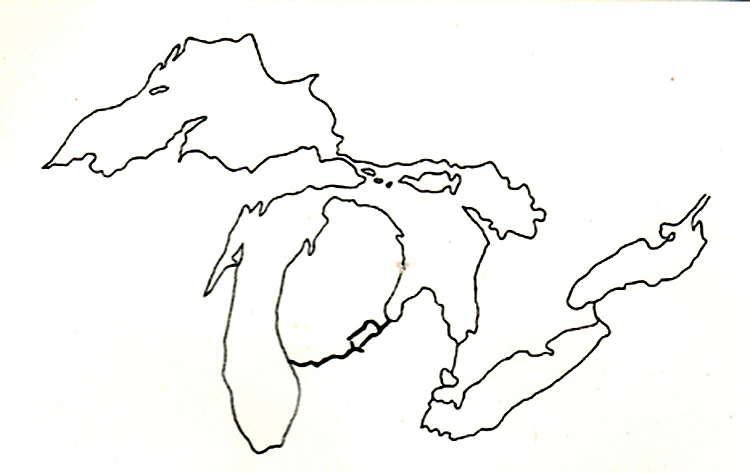
Back Cover Illustration

Back Cover Illustration
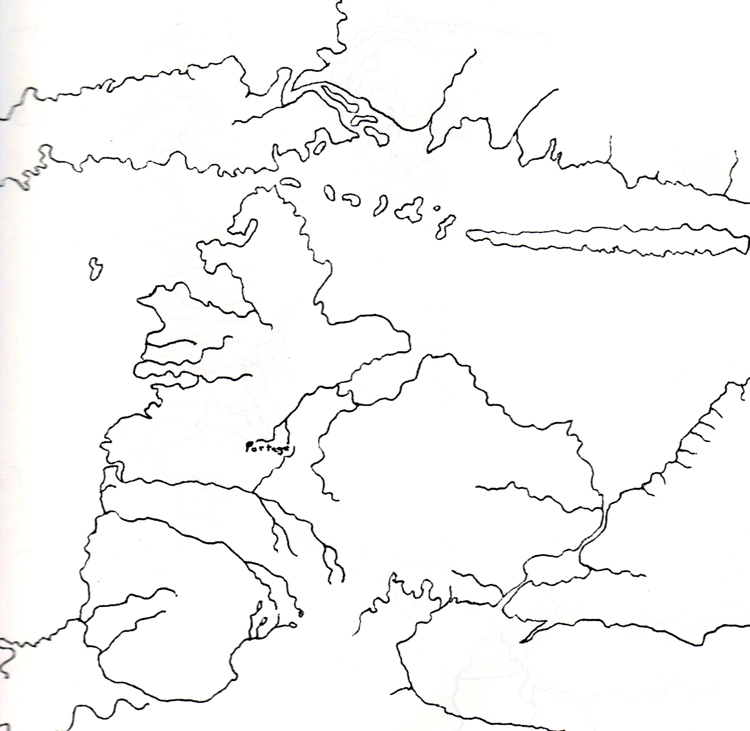
Figure 3. Detail from Franquelin’s 1688 map of North America; redrawn after Franquelin.
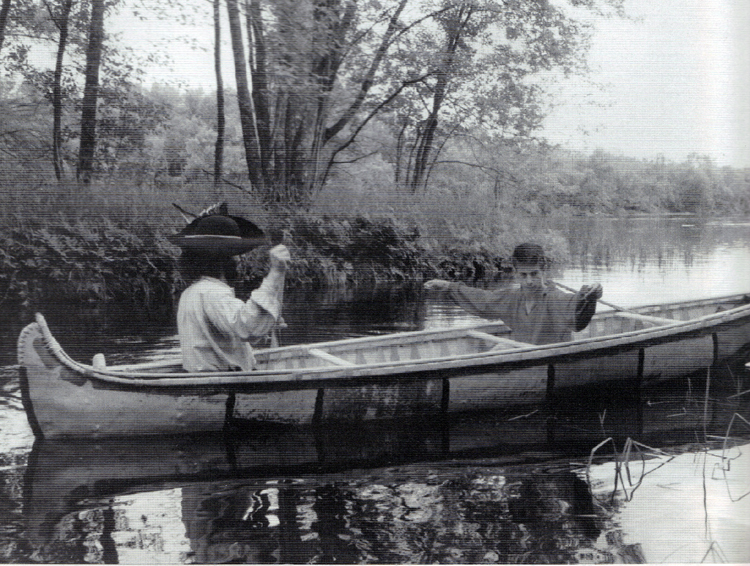
Figure 11. Sprinking an offering of tobacco atop the waters before departure. Native spirituality taught that everything in the world possessed a spirit; some of these were benevolent, others were malevolent, and some could fluctuate in either direction. Before a water journey, travelers made a respectful offering to the various underwater spirits, such as the missipichou or great cat, to appease them. Hopefully, they would not lash their tails, and thus create stormy waves and contrary winds.

Figure 13. Paddling in the bow location, with bare legs and feet padded from the canoe’s ribs by a folded blanket bedroll. The bow paddler kept a close watch for submerged rocks and logs that could damage the craft, looked out for shallow areas, and made short-term steering adjustments as necessary. In this scene, the split cedar elements of the canoe, as well as the gunwale lashings made of split roots of black spruce, are clearly visible. The broad, flat gunwale caps, pegged to the top surface of the inwale and outwale, protected the root lashings from abrasion and breakage. Against the right wall, a long setting pole is positioned, ready for use at a moment’s notice.
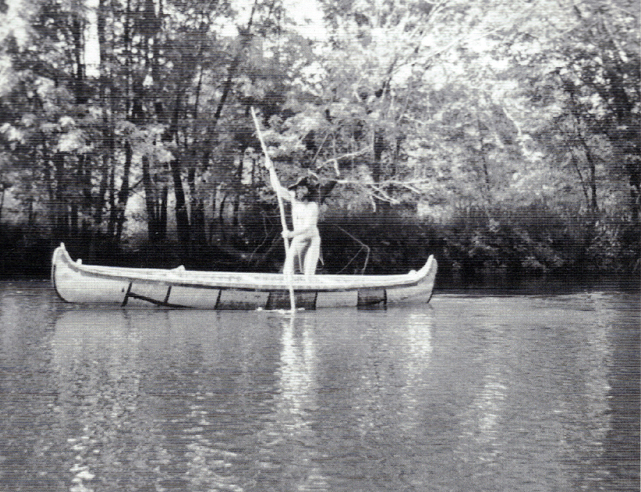
Figure 14. Propelling the craft with a setting pole, from a standing position. In shallow waters, especially those with a sandy bottom, poles were more effective than paddles. They were also sometimes utilized when traveling against a head wind, and in some instances for guiding the craft up or down rapids. Finally, a pole was used by the stern paddler to keep the canoe away from the bank while it was being towed by the bow paddler, pulling on a long line from either the shoreline or in the water.
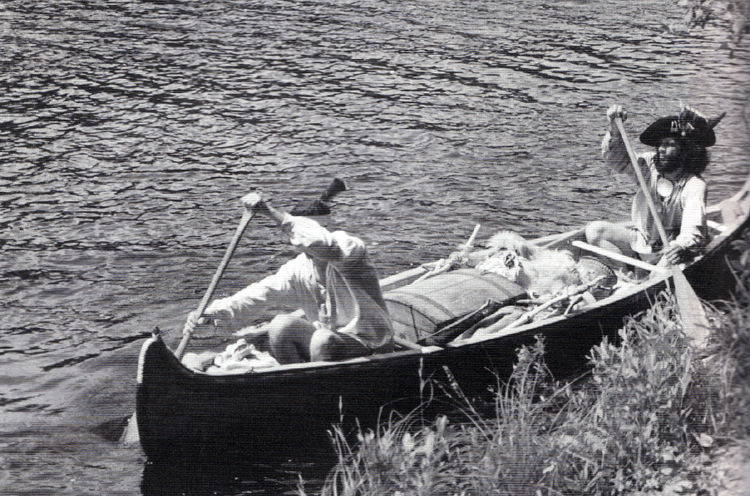
Figure 17. Fully loaded for a long voyage, with the paddlers seated upon the folded roof and floor tarpaulins of the canvas shelter. The amount of distance from the waterline to the top of the gunwales, called freeboard, figured prominently in the safety equation when traveling in turbulent waters. Balancing the total weight of the cargo, and its resulting amount of freeboard, against the probable conditions of a given journey always entailed a major judgement call. As the journey proceeded and the supplies of food and beverage were gradually reduced, the amount of freeboard increased, as the content of the craft was lightened by gradual increments.
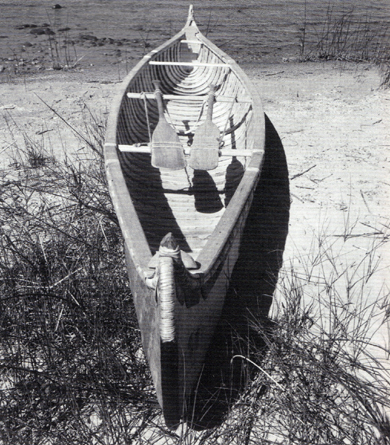
Figure 19. The canoe readied for portaging. Using the long braided cord at each end of a tumpline, two paddles were bound in place atop the center thwart and the adjacent thwart toward the bow, with the blade ends of the paddles pointing toward the bow. The pair of deep shoulders carved near each end of the center thwart prevented the lashings of the paddle shafts from sliding inward along the thwart during the carry. When these lashings were completed, the wide moosehide strap at the center of the tumpline hung down between the two paddle shafts, to nearly touch the center rib of the craft.
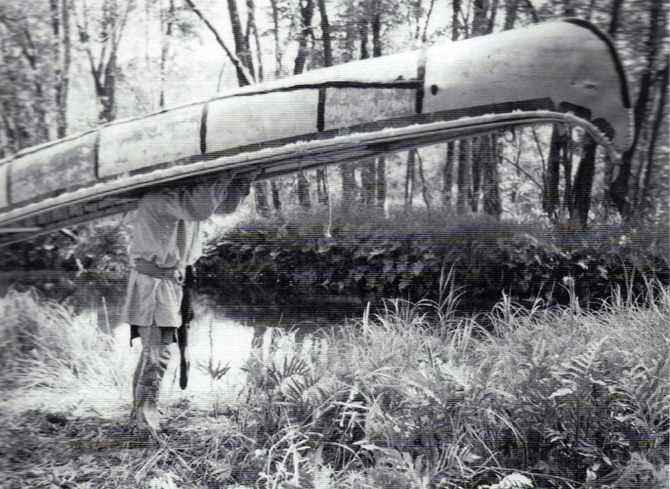
Figure 20. The author portaging the canoe. The moosehide band at the center of the tumpline was placed across his forehead, thus allowing the majority of the weight of the load to be borne by the head and neck. The paddle shafts, resting lightly on his shoulders, provided additional support. His hands gripped the paddles for control, which was needed for steering the overturned canoe through tree limbs and brush along the pathway, and when gusts of wind buffeted the canoe and its carrier.
